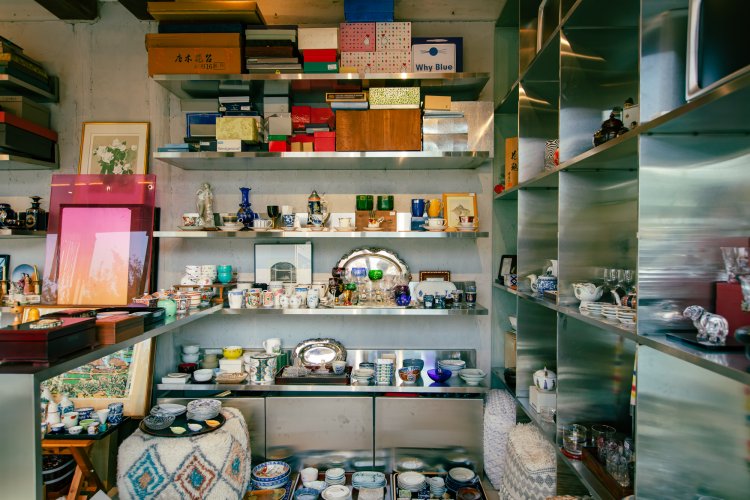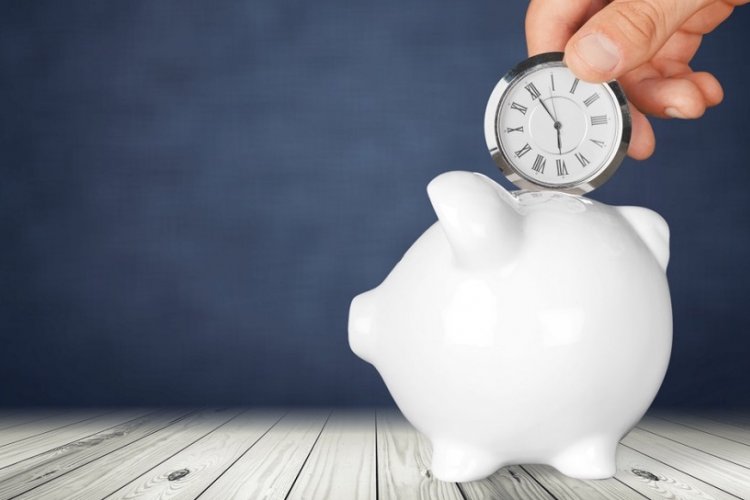Ten Tips for Secondhand App Shopping Success
Nowadays, thanks to the internet, buying secondhand or vintage is easier than ever. In China, the process is made even more convenient with apps and mini programs bringing options literally into the palm of our hands and allowing people to sell items directly to interested buyers.
In this post, I want to share some tips for buying on secondhand apps in China. As I mainly use the app Idle Fish 闲鱼 when buying secondhand, that is the platform I have in mind for this post. However, most of these tips can apply to other platforms as well. Some tips may be obvious, others less so, but every piece of advice here is worthy of remembering.

1. Read (and Understand) the Description
This almost goes without saying, but the advice is especially relevant for expats in China, who will be navigating these platforms with varying degrees of Chinese language proficiency. Regardless of your language level, it is important to make sure you understand exactly what is being communicated in the description of the listing you’re interested in. Use whatever software or dictionaries to support you. Look up specific or technical terms you aren’t sure of, and ask Chinese-speaking friends for assistance if needed.

2. Note the Details
A good seller will put almost everything you need to know in the item’s description, hopefully leaving you with few questions about basic aspects of the sale. You should be told plainly about price, name of the item and brand, condition of the item, etc.
Pay attention to the particulars, including:
– Multiple Items: Does the listing contain multiple items for sale? Sometimes, a seller will post a single listing, with a single officially listed price, and then specify different prices for different items, or quantities. So, a listing for perfume for RMB 200 could actually contain options for different decanted quantities, all at different prices. You may also find that some items have already sold, and so only certain items at prices other than the listed price are available.
– Conditions: Are returns possible? Most likely, no.
– Purchase or Renting: You may come across listings that advertise an unbelievable price, where the item is actually not for sale but rather available for rent. It’s important to be aware of these things to save yourself and the seller from difficulties down the road.

3. If It Seems Too Good To Be True, Then It Probably Is
It’s age-old advice for a reason. If you find a “deal” that looks particularly great … be wary. The item could be fake (this includes high-level replicas), it could be defective in some undisclosed way, or it could possibly not even exist.
Just use a bit of common sense. (I promise that RMB 40,000+ five-motif VCA Alhambra bracelet selling for RMB 1,000 is not real…)

4. Compare Prices
Given the advice above, it’s important to compare prices of similar or the same items from multiple sellers. It’s less about getting a good deal than about gauging the market. If you find five of the same item for between RMB 1,200 and RMB 1,800, the sixth item listed for RMB 500 should give you pause.

5. Watch Out for Sketchy Sellers
Take note of individuals or shops who do the following:
- They don’t post relevant info like serial numbers or the interior/back of items
It could, of course, be the case that an individual is not that savvy about selling a particular type of item, or they may simply have posted a few pictures to get a listing up. They should, however, be willing to accommodate reasonable requests for further information.
Sometimes, however, it is clear that a seller is very familiar with how things go and what information discerning buyers are looking for. If they include a lot of pictures or they seem otherwise knowledgeable but conspicuously don’t show the serial number, that could be a red flag.
- They’re hesitant to answer questions or provide additional video evidence
Sellers who don’t want to show relevant parts of an item, such as serial numbers, important records of use, interiors or backs of items, or the like, should be treated with caution.
You can also gauge this through how the seller engages with public comments on their listings. Are their answers acceptable? Do they answer comments at all?
- They don’t put the name (brand, model) in their description
This goes for most things, but is particularly applicable to purchasing big-name items and vintage pieces. The brand name or model identification is the whole draw, so if the listing seems to imply a certain product but the description is vague or omits brand or model name information entirely, that’s suspicious.
Of course, this doesn’t mean that if a listing includes brand and model names that the item is legit. However, given that the seller could include that information and lie anyway, if they don’t even include the information, that’s a clear sign that something is perhaps not what it seems.
- They post items with great presentation and “too-good-to-be-true” prices, but never seem to have any items in stock
A sleek presentation, items in great condition, and a large number of different pieces all for the same fantastic price? Questionable. Even more so if each item you ask about happens to be “sold out,” but the listing is never taken down.
- They use the same pictures as other sellers
This is another benefit of poking around a bit to see what the field is like before making a decision on a single item. Sometimes, multiple sellers in different cities will present items with slightly different prices but using the exact same pictures. It could be coordinated, or it could be that one listing is genuine and the others are fake. Be aware.
- They only use “official” pictures
There’s simply no reason not to include real photos of the actual item being advertised. If you come across a listing for a secondhand item, but the only pictures provided are from the original company or manufacturer, consider why that would be or whether that item is something you want to pursue with that seller.
On Idle Fish 闲鱼, often a listing will be linked from Taobao, so take note of whether this is the case.

6. Ask, Ask, Ask!
You are the customer, you are the one with the money, and you are the one making the decision. You have power. Ask whatever questions you need to feel comfortable making a purchase. Ask to see more images of the item or parts in question, whether through photos or videos. Also, make sure to ask to see all components of an item or the offered set. I bought a vintage purse once that I’m fairly sure is genuine, but the accompanying strap (which wasn’t shown in the pictures but which the seller said she would include) turned out to be not original and clearly fake leather.

7. Compare Item Pics With Confirmed Photos of the Real Thing
Another tip that works for everything but is particularly useful when purchasing vintage items is to compare the provided photos of the item you wish to buy with photos from the original manufacturer. Look closely at details – do aspects of the same model, same year, etc., match? Stitching, logos, lettering, knob placement, color…? You can also try other reputable secondhand sites, forums, and so on, although it’s obviously best to locate a confirmed, authentic representation for comparison.

8. Look at Seller Ratings
If the platform provides information about the seller, use it! Check their ratings and reviews. On Idle Fish 闲鱼, sellers often also have “levels,” with Level 7 being the highest and Levels 5-7 designating great shops that have sold a lot of items and received high praise and ratings from their customers.
Does a seller having a lower rating or no rating at all mean they are out to scam you? Of course not. But the presence of good reviews or a high-level rating gives you more information to work with when making your decisions.

9. Consider Using Associated Authentication Services
Idle Fish 闲鱼 allows some items to be first sent to an authentication service before arriving to you. If the item passes inspection, you get a certificate, and if the item does not pass inspection, then it will be returned to the seller and you will get your money back.
That doesn’t mean, of course, that items from sellers who don’t provide an authentication service are necessarily fake. Many good and dependable sellers provide authentic and high-quality items. But an authentication service is a great option for additional security that may help you narrow down leads to pursue when making your purchasing decisions.

And finally, remember:
10. If Something Feels Off to You, It’s Okay To Walk Away
It’s your money and your risk, after all. Better to be sure than to feel pressured into committing to a purchase. There will always be other opportunities.

What things do you keep in mind when you are buying secondhand? Did I miss any good tips? Let us know in the comments!
READ: Three Things for the Week Ahead in Beijing (Apr 21-27)
Images: Pexels, Abigail Weathers







